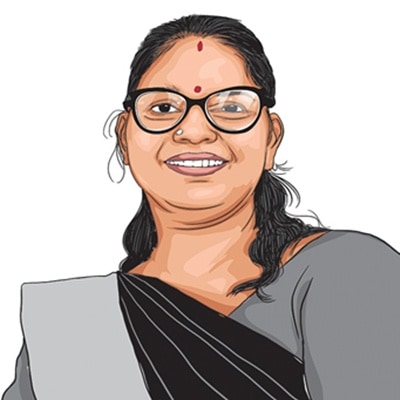Opinion An ASHA worker writes: At 100, I see an India beyond the rural-urban divide; a healthy India
Recognising us as workers allows us dignity and protection, along with enabling us to assume a more empowered role in aiding our people’s medical needs. If we are to be taken seriously — by the state, by the gram panchayat responsible for disbursal of our funds, and our patients — recognising us as workers is imperative
 Working on the ground and connecting with people is a rewarding exercise. (File Photo)
Working on the ground and connecting with people is a rewarding exercise. (File Photo) At 100, I want India to have a hospital in every village. In the 13 years that I’ve worked as an ASHA worker in Maharashtra’s Wardha district, I’ve seen and experienced what lack of access to medical aid can do. The goal for the next 25 years should be to funnel resources and attention into rural India.
One of the biggest issues facing rural health services is lack of information. ASHA workers were put in charge of quarantining people during the Covid-19 pandemic. Most in our village, Pauna, turned against us — preoccupied with the fear of separation and quarantine, we were accused of “getting them caught”. Community members wouldn’t let us touch their gates and would hurl abuse and threaten violence. During the peak of the first wave, a fellow worker was asked to take a patient away. Having no authority to do so, she refused. Several neighbours broke into her home and pulled out knives to threaten her. Another friend’s house was broken into and she and her husband were beaten black and blue.
Channels of communication between the government and the rural population need to be robust. A deadly pandemic makes the value of these channels obvious — but in order to get people on board, information needs to be sent out much more effectively and in a hands-on manner. ASHA workers play a crucial role in aiding this effort. But we can’t do this alone. We need new systems to ensure the dissemination of life-saving information in remote areas.
Another area of concern is the lack of resources. Over the years, with the closest hospital being 9 km away and ambulances taking hours to respond, we’ve had to take multiple women in labour to the hospital in auto rickshaws. Medical facilities are understaffed and lack adequate equipment for various basic procedures like deliveries. Simple tests, like for sickle cell anaemia and HIV, cannot be conducted where I live. Losing people to neglect should be an impossibility for us at 100 years old.
I started this job with little to no information of what it entails. We used to be paid Rs 250 a month in 2009. We have since unionised and agitated for a living wage. Thirteen years on, I earn around Rs 4,000 a month. It is simply not enough to sustain a family of four, forcing me to work two or more jobs. In the pandemic, my husband lost his job and had to revert to farming. Because of rain disruptions this year, we have lost our crop, leaving me the sole earner for the family. Payments are also delayed by months. Desperation for work leaves us unable to focus on the groundwork we do.
For ASHA workers, two issues remain critical. First, we should have a fixed income, giving us stability in a job where we spend between eight to twelve hours daily. Secondly, we are recognised as “volunteers” currently. Our role needs to be formalised. Recognising us as workers allows us dignity and protection, and helps us to be taken seriously — by the state, the gram panchayat responsible for the disbursal of our funds, and patients.
For people in our village, we have become lifelines. We have led innumerable immunisation drives and are everybody’s first call in a medical emergency. We have laboured to build trust and serve as a bridge with the state. Recognition, like being named a “Guardian of the Year” by Time magazine in 2020 has given me some leverage to circumvent the system and seek funds for people in my community. However, using accolades as a crutch to resolve structural issues is a short-term fix.
My work brings me joy and pride. Working on the ground and connecting with people is a rewarding exercise. At my job interview, I was asked “Logon ki sewa karna pasand hai?” (Do you like serving people?). A better, stronger India is possible if we are enabled to serve people. Giving us due recognition would serve this end, along with making rural India’s needs – medical or otherwise — a priority.
The writer is an ASHA worker. The article is as told to Sukhmani Malik. This article is part of an ongoing series, which began on August 15, by women who have made a mark, across sectors





